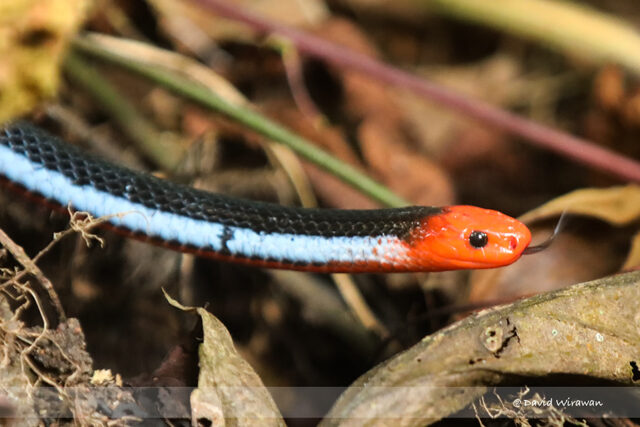Calliophis bivirgatus is a species of snake in the family Elapidae known commonly as the blue coral snake or blue Malayan coral snake. It is native to Southeast Asia. Wikipedia
Spotted at Dairy Farm Nature Park
The blue coral snake (Calliophis bivirgata), has a unique kind of venom that most snakes don’t have, and it even has the largest venom glands of any snake, which extend more than a quarter of its body length.
It’s a quick striker, so if you were bit by one, the effects of the venom’s toxins would be nearly immediate compared to many other kinds of snake venom.
These snakes are ‘killer’s killers’. They specialise in preying on other venomous snakes, including young king cobras, so they play a ‘hunt the most dangerous’ game,” said team member Bryan Fry, from the University of Queensland.
“With its combination of electric blue stripes and neon red head and tail, the blue coral snake is arguably one of the world’s most striking species of snake. It also has the biggest venom glands in the world, extending over a quarter the length of its body.
After analysing the chemical makeup of the venom, the team identified a new type of toxin called calliotoxin. Calliotoxin works by attacking the prey’s sodium channels – the pathways that turn nerves on and off.
So the snake’s venom turns these channels on and keeps them on, causing paralysis to take over the body by ‘frying’ the nervous system. This is the first time a snake has been shown to use this strategy – which is more similar to the venom of cone snails or scorpions.
Reference:
Blue Coral Snakes Have Venom Unlike Any Other Snake
The Venom From This Beautiful Snake Will Murder You Horribly






















